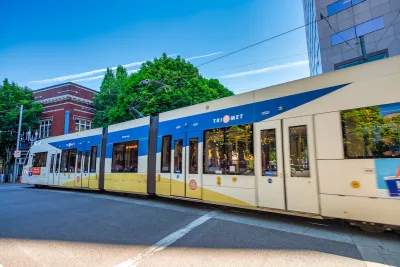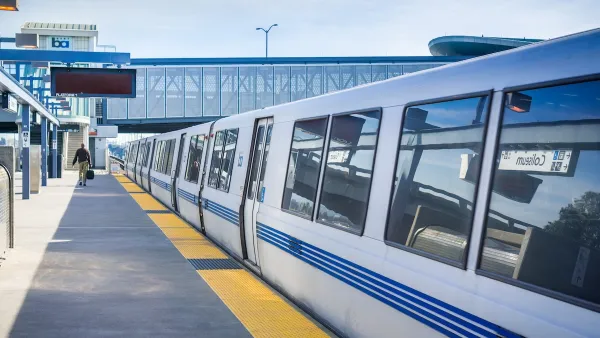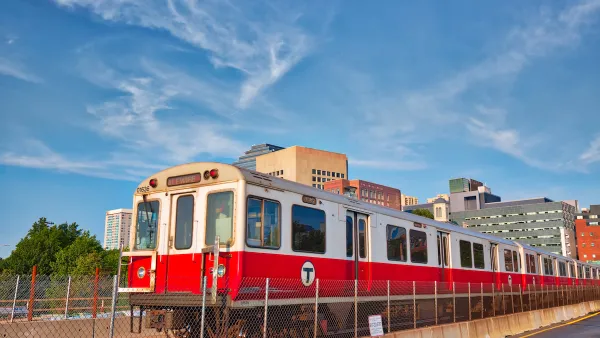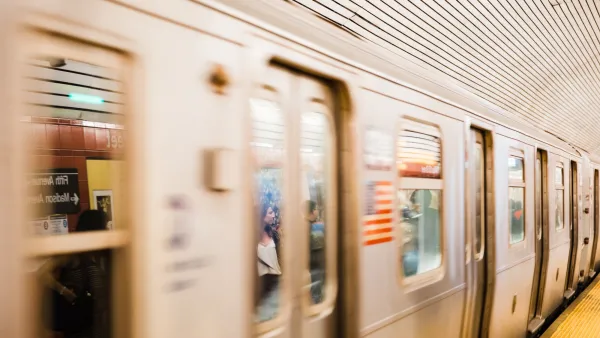When temperatures hit 100 degrees, the city’s two train systems face challenges that force them to slow their speeds or stop operations altogether.

Portland’s MAX trains must slow down after temperatures hit 100 degrees, reports Anthony Macuk for KGW.
According to Macuk, “TriMet has upgraded the system in recent years to maintain full speed at higher temperatures, but there's still an upper limit.” After 100 degrees, MAX trains will slow down to a top speed of 35 miles per hour, while WES trains will top out at 40 mph.
At 105 degrees, the WES trains stop running. If temperatures get that high, TriMet may adjust or suspend service on MAX trains, but that decision is made based on conditions throughout the system and out of consideration for the safety of riders and employees.
As Macuk explains, “MAX trains are powered by overhead wires, which have to be kept taut so the train's pantograph arm can maintain steady contact. But the wires are made of copper, which expands when heated and can cause sagging.” If the sagging causes the lines to sink too low, trains have to slow down or stop entirely.
WES trains face a different problem, one that could impact Amtrak and other train systems as well. “TriMet's WES trains are diesel-powered and run on Portland & Western freight rail tracks with no overhead wires, but they can still get tripped up by heat waves because the high temperatures can also cause the steel rails to expand and temporarily deform — a phenomenon called ‘sun kinks’ — making it unsafe to drive trains over them at full speed.”
FULL STORY: Yes, TriMet MAX trains have to slow down when it's very hot out

National Parks Layoffs Will Cause Communities to Lose Billions
Thousands of essential park workers were laid off this week, just before the busy spring break season.

Retro-silient?: America’s First “Eco-burb,” The Woodlands Turns 50
A master-planned community north of Houston offers lessons on green infrastructure and resilient design, but falls short of its founder’s lofty affordability and walkability goals.

Delivering for America Plan Will Downgrade Mail Service in at Least 49.5 Percent of Zip Codes
Republican and Democrat lawmakers criticize the plan for its disproportionate negative impact on rural communities.

Test News Post 1
This is a summary

Test News Headline 46
Test for the image on the front page.

Balancing Bombs and Butterflies: How the National Guard Protects a Rare Species
The National Guard at Fort Indiantown Gap uses GIS technology and land management strategies to balance military training with conservation efforts, ensuring the survival of the rare eastern regal fritillary butterfly.
Urban Design for Planners 1: Software Tools
This six-course series explores essential urban design concepts using open source software and equips planners with the tools they need to participate fully in the urban design process.
Planning for Universal Design
Learn the tools for implementing Universal Design in planning regulations.
EMC Planning Group, Inc.
Planetizen
Planetizen
Mpact (formerly Rail~Volution)
Great Falls Development Authority, Inc.
HUDs Office of Policy Development and Research
NYU Wagner Graduate School of Public Service





























